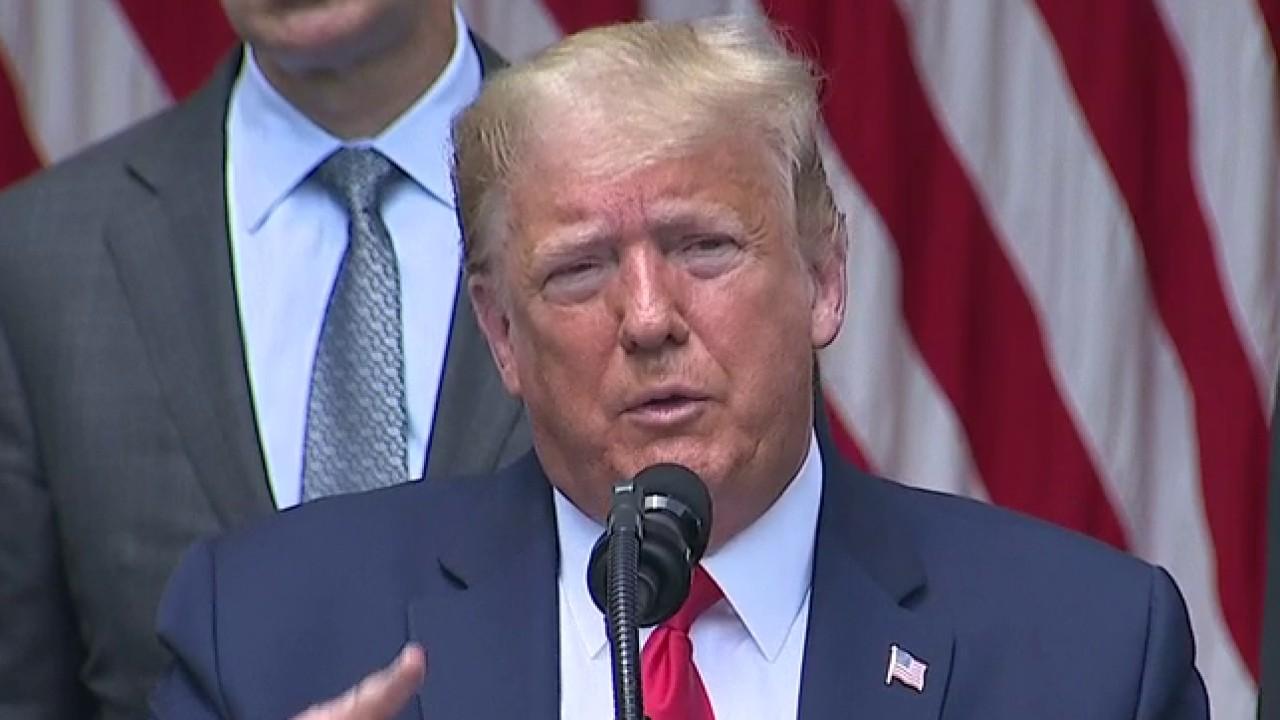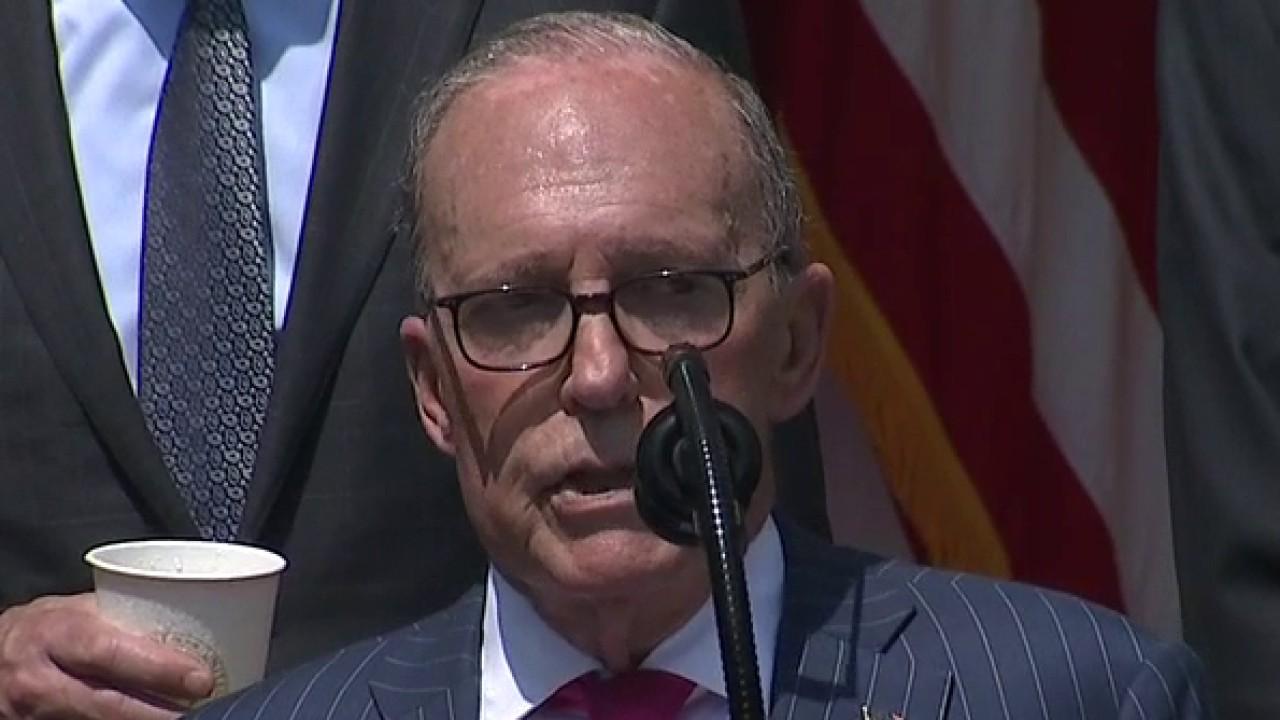Unemployment rate, good jobs news, tell us this about coronavirus recession
The economic recovery is ahead of schedule
Data released by the Bureau of Labor Statistics (BLS) Friday show that the labor market strongly bounced back from the historic losses suffered over the previous two months. Pandemic-related job losses were concentrated in late March and early April while the April to May period showed growth of 2.5 million jobs.
This shocked economic forecasters who expected another 8 million drop.
KUDLOW SAYS NEXT CORONAVIRUS RELIEF PACKAGE NEEDS TO INCLUDE 'LONG-TERM' MEASURES TO SUPPORT ECONOMY
In short, we’ve seen the largest-ever monthly drop in employment, followed by the largest-ever increase in employment.
President Trump today called it a “rocket ship recovery” that’s even better than the most optimistic predictions of a V-shaped recovery.
How did this happen?
As I (and many economists) been arguing for the last 3 months, this is not a typical recession. It’s primarily created by customers avoiding stores and households being more cautious with their spending. But state- and city-mandated business closures to avoid the uncontrolled spread of COVID-19 were an important part, too.
To the extent that those lockdowns gave us the space to better understand the problem and avoid overwhelming the health care system, they helped. But there is good evidence that states which mandated lockdowns saw substantially larger increases in unemployment insurance claims than those which did not. However, it’s also worthwhile to say that states which saw larger initial outbreaks of COVID-19 would have been more likely to mandate business closures, so the two groups aren’t perfectly comparable without more rigorous analysis.
WHAT HAPPENS TO YOUR UNEMPLOYMENT BENEFITS IF YOU REFUSE TO GO BACK TO WORK?
In short, the unexpected surge in employment comes from the fact that many states were cautiously ending their economic lockdowns during the same week that BLS surveyors were gathering data for the May jobs report. As more states end their lockdowns and data gathering for June occurs next week, we should see even more improvements next month.
UNEMPLOYED AMERICANS WOULD RECEIVE $1,200 BACK-TO-WORK BONUS IN NEW REPUBLICAN BILL
However, there is one aspect of the jobs report that needs further explanation: the unemployment rate.
The headline unemployment rate dropped from 14.7 to 13.3 percent in May, but as the BLS acknowledged last month, it’s still incorrect. It doesn’t include the additional 4.9 million workers who were likely improperly counted as “employed, but absent from work.” Adding these workers into the unemployment rate would raise it to 16.1 percent.
GET FOX BUSINESS ON THE GO BY CLICKING HERE
However, not even this adjustment is sufficient to fully understand the impact of COVID-19, because the labor force has dropped by 6.3 million since February. Adding in these workers, who likely simply did not meet the definitional requirements of those who are counted as unemployed, suggests that the pre-pandemic equivalent unemployment rate is over 19 percent.
But even this is a substantial improvement over last month, when I estimated the pre-pandemic equivalent unemployment rate to be 23.5 percent.
We should celebrate the great news that the economic recovery is ahead of schedule. Even better, because most unemployed workers are only temporarily furloughed, rather than permanently laid off, we should see recovery from this recession proceed much faster than we’d normally expect.
But the depth of the economic hole that we’re in also matters, and we should temper our jubilation with the knowledge that it will take many months of similar economic gains to get back to where we were.
The journey will be long, but we’ve already started.
Michael D. Farren is a Research Fellow at the Mercatus Center at George Mason University.

